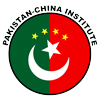BOOK REVIEW: 'THE CHINA-PAKISTAN AXIS: ASIA'S NEW GEOPOLITICS'
Date : 15-10-2015 By : Amna Rafi
 |
Andrew Small. The China-Pakistan Axis: Asia’s New Geopolitics. New York: Oxford University Press, 2015. Pages: xxx+288. Hardback price: $34.80.ISBN: 978-0-19-025757-6.
Andrew Small, a transatlantic fellow at the German Marshall Fund of the US, is an expert on Chinese foreign and economic issues. Small has served in Beijing, Brussels, London and Washington. He has also spent time in Gilgit-Baltistan. His book ‘The China-Pakistan Axis: Asia’s New Geopolitics’gives an insight into the various aspects of Sino-Pak relations, China’s role in the region, the likely dilemmas and the imperative to counter terrorism.
In Pakistan, China is viewed as a reliable partner and a friend. Bilateral relations between the two countries have continued to flourish over the years, and the ideological and cultural differences have never been a point of concern. Against the backdrop of the new Silk Road connecting the Middle East, the markets of Europe and the mega-cities of East Asia, the author sees the China-Pakistan alliance very optimistically. The Chinese led ‘Silk Road Economic Belt’, the ‘Maritime Silk Route’ (both are termed collectively as the One Belt One Road – OBOR) and the ‘Vision for 21st Century Eurasian Connectivity’ aims at creating strategic channels, trade and industrial hubs.
The China-Pakistan Economic Corridor (CPEC) is also a part of OBOR. The CPEC would link Gwadar to China’s Western city of Kashgar, enhancing China’s access to the markets of South Asia, Central Asia and the Middle East. Seen from Pakistan’s perspective, the Economic Corridor would give an impetus to Pakistan’s struggling economy, the country battling terrorists for over a decade will receive foreign investment, and Islamabad’s regional standing would be strengthened.
The author’s opinion that China’s support to Pakistan during the India-Pakistan wars was limited, is based on the notion that China did not get militarily involved in these conflicts (p. 10-19). He further argues that China’s limited backing to Pakistan in the bilateral conflicts with India proved useful for Pakistan in the long run. According to him, the China-India war (1962) was a compelling factor behind New Delhi’s nuclearization and to counter-balance Delhi’s strategic capability, Pakistan opted for nuclearization. In other words, China indirectly contributed towards Pakistan’s nuclearization, “the ultimate means of self defence” (p. 22-25).
Another dimension highlighted in the China-Pakistan relationship is terrorism. The militant attacks in Pakistan have raised concerns in China. Chinese engineers working at the Kamra Air Force base (assembling the JF-17 fighter jet) had to be moved to a secure location following the terrorist attack. Further, the author points out that the presence of the East Turkistan Islamic Movement (ETIM) in the province of Xinjiang, a Muslim majority area bordering Kyrgyzstan, Tajikistan, Kazakhstan, Russia, Mongolia, Afghanistan, India, and the entirety of China’s 250 kilometers border with Pakistan is a source of concern for China (p. 69). ETIM links with other extremist groups reinforce Beijing’s concern over Pakistan’s counter terrorism strategy. The author also refers to the conspiracy theorists claim that the Turkistan separatists are being abetted by the US or India in order to drive a wedge between China and Pakistan (p. 80). Another view highlighted in this context is that the US led drone strikes carried out in the tribal belt of Pakistan, in which, a large number of militants, including the ETIM elements were targeted, served Chinese purpose as well (p. 145-149). In other words, countering ETIM brought the strategic rivals, the US and China on the same page.
Over the ETIM issue, Islamabad’s views are aligned with Beijing. Pakistan cannot mar its relations with China for the sake of few disaffected Uighurs; moreover, Pakistan’s counter terrorism offensive is against all the miscreants.The military has debased the terrorist networks and more than 90 percent of the area has been cleared of militants. China’s likely stance over Pakistan’s counter terrorism strategy as reflected in President Xi Jinping’s visit to Pakistan (April 2015) was that the President did not appear critical of Pakistan’s fight against terrorism; rather he praised Pakistan’s offensive against militants in North Waziristan.
In view of the Belt and Road initiative, China is likely to emerge as an active player in the region. For the regional states, in particular Pakistan, the Economic Corridor is an opportunity to integrate with the Chinese economy. Some quarters have expressed their reservation over the CPEC. The regional actors opposed to China’s progress will try to create impediments in the way. Targeting of Chinese led projects could be a part of their nefarious agenda. This could turn out to be a challenge for China.
The writer is an Assistant Research Officer at the Islamabad Policy Research Institute (IPRI). Her prime area of interest is Asia Pacific and Southeast Asia.
The views expressed in this article belong to the author and do not necessarily reflect the views of the Pakistan-China Institute
Related Article: Roundtable Discussion with Andrew Small at the Pakistan-China Institute
